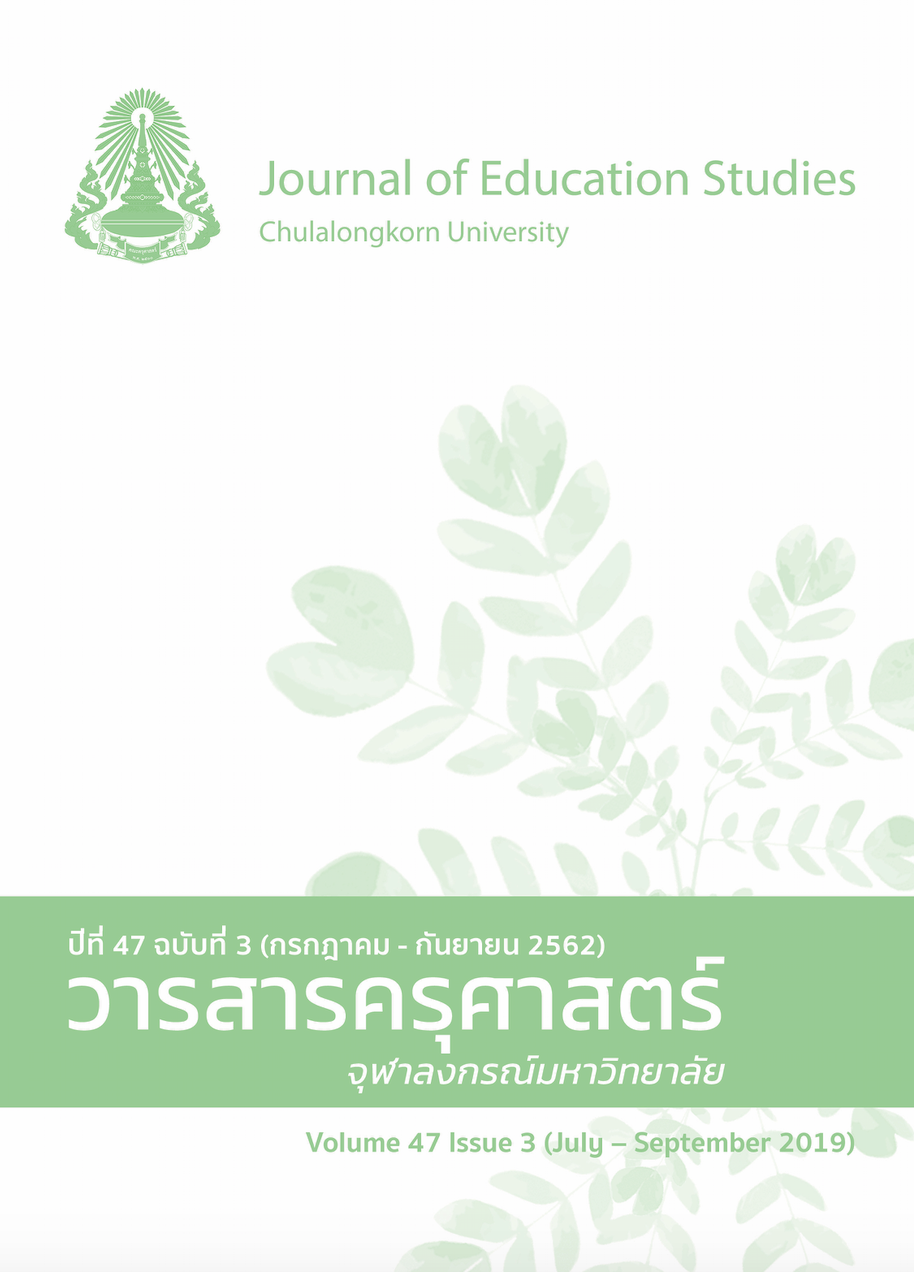Development of History Instruction Based on Group Investigation and Magic If Approaches to Promote Historical Thinking Skills and Historical Empathy of Upper Secondary School Students
Keywords:
HISTORICAL THINKING SKILLS, HISTORICAL EMPATHY, GROUP INVESTIGATION, MAGIC IFAbstract
This research aimed to develop and study the effectiveness of history instruction to promote historical thinking skills and historical empathy of upper secondary school students based on Group Investigation and Magic If approaches. This is a research and development that the experiment in instructional process had been implement for 15 weeks. The research procedure was divided into 2 phrases: phrase one was to develop a history instruction based on Group Investigation and Magic If approaches and phrase two was to experiment the developed instructional process. The target group composed of 31 secondary school students in Matayom 5. The data collection tools include of performance test in historical thinking skills and performance test in historical empathy. The result of the research could be summarized as follows; 1. a history instruction based on group investigation and magic if approaches consisted of Principle, Guidelines, Preparation, Teaching procedure 5 steps, called “TIMER”. They are (1) Talk about historical issue, (2) Imagination about the past, (3) Manage evidence, (4) Exploration through time, and (5) Refection to the past, along with Measurement and Evaluation 2. The quality of this instructional method, students had historical thinking and historical empathy higher result at .05 significance and had a change of historical thinking skills and historical empathy better.
References
ภาษาไทย
ชุติมา มณีวัฒนา. (2550). เอกสารประกอบการสอนรายวิชาการกำกับการแสดง 1. เอกสารไม่ได้ตีพิมพ์, คณะศิลปกรรมศาสตร์, มหาวิทยาลัยราชภัฏสวนสุนันทา, กรุงเทพมหานคร, ประเทศไทย.
วินัย พงศ์ศรีเพียร. (2552). อาจารยบูชา. กรุงเทพมหานคร: ศักดิ์โสภาการพิมพ์.
สำนักวิชาการและมาตรฐานการศึกษา. (2558). แนวการสอนประวัติศาสตร์: ประวัติศาสตร์ไทย หลากหลายวิธีเรียน. กรุงเทพมหานคร: โรงพิมพ์ชุมนุมสหกรณ์การเกษตรแห่งประเทศไทย.
สุเนตร ชุตินธรานนท์. (2554). พม่ารบไทย: ว่าด้วยการสงครามระหว่างไทยกับพม่า (พิมพ์ครั้งที่ 10). กรุงเทพมหานคร: มติชน.
สุเนตร ชุตินธรานนท์ และ คณะ. (2557). ชาตินิยมในแบบเรียนไทย (พิมพ์ครั้งที่ 2). กรุงเทพมหานคร: มติชน.
ภาษาอังกฤษ
Assessment Resource Center for History. (2013). Historical thinking skills scoring rubric. Retrieved from https://www.umbc.edu/che/arch/rubric.php
Barton, K., & Levstik, L. (2004). Teaching history for the common good. Mahwah, NJ: Lawrence Erlbaum Associates.
Centre for the Study of Historical Consciousness. (2014). The historical thinking project promoting critical historical literacy for 21st century. Retrieved from https://historicalthinking.ca
Colby, S. R. (2007). Students as historians: The historical narrative inquiry model’s impact on historical thinking and historical empathy (Unpublished Doctoral Dissertation). University of North Texas, Texas.
Davison, M. (2012). “It is really hard being in their shoes”: Developing historical empathy in secondary school students (Unpublished Doctoral Dissertation). University of Auckland, Auckland.
Endacott, J., & Brooks, S. (2013). An updated theoretical and practical model for promoting historical empathy. Social Studies Research and Practice, 8(1), 41-58.
Ercikan, K., & Seixas, P. (2015). Issues in designing assessments of historical thinking. Theory Into Practice, 54(3), 255-262.
Ferretti, R. P., MacArthur, C. D., & Okolo, C. M. (2001). Teaching for historical understanding in inclusive classrooms. Learning Disability Quarterly, 24(1), 59-71.
Foster, S. (2001). Historical empathy in theory and practice: Some final thoughts. In O. L. Davis, E. A. Yeager & S. J. Foster (Eds.), Historical empathy and perspective taking in the social studies. Lanham, MD: Rowman and Littlefield.
Heathcote, D. (2008). In my view: Means and ends: History, drama and education for life Primary History The primary education journal of The Historical Association, 48, 6-7.
Joyce, B., & Weil, M. (2011). Models of teaching (8th ed.). Boston: Pearson.
Kade, D., Özcan, O., & Lindell, R. (2013). Towards stanislavski-based principles for motion capture acting in animation and computer games. In International Conference in Illustration and Animation. Porto, Portugal.
National Center for History in the Schools. (1996). The national standards for history. Retrieved from https://www.sscnet.ucla.edu/nchs/standards
Nokes, J. (2011). Historical literacy. Social Studies, newsletter:Utah State Office of Education.
Nye, A., Hughes-Warrington, M., Roe, J., Russell, P., Deacon, D., & Kiem, P. (2011). Exploring historical thinking and agency with undergraduate history students. Studies in Higher Education, 36(7), 763-780.
Sexias, P., & Morton, T. 2013. The big six: Historical thinking concepts. Toronto: Nelson Education.
Smith, C. M., Gephardt, E. G., & Nestel, D. (2015). Applying the theory of stanislavski to simulation: Stepping into role. Clinical Simulation in Nursing, 11(8), 361-367.
The College Board. (2012). AP world history. Retrieved from https://apcentral.collegeboard.org/




